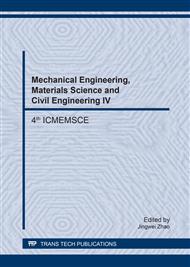p.3
p.7
p.12
p.21
p.26
p.31
p.35
p.43
Effect of Fiber Orientation on the Wrinkling Behavior of Thermoplastic Composite
Abstract:
In this work, experiments were conducted to examine the impact of fiber orientation of self-reinforced polypropylene on wrinkling phenomenon. Defects due to wrinkling are major quality issues in rapid forming of sheet materials. This article examines the influence of two fiber orientations [0°/90° and 45°/-45°] on wrinkling initiation of a self-reinforced polypropylene composite (Curv®) material system. It was found that 45°/-45° specimen wrinkles at smaller axial displacement compared to 0°/90° specimen. In both specimens, there was an abrupt change in strain increment ratio that corresponded to the onset of wrinkling. This phenomenon validates the robustness of the wrinkling indictor based on strain increment ratio concept.
Info:
Periodical:
Pages:
21-25
Citation:
Online since:
March 2017
Authors:
Price:
Сopyright:
© 2017 Trans Tech Publications Ltd. All Rights Reserved
Share:
Citation:


